Rectifier diodes of medium and high power. Diodes reference book. Rectifier types and technical parameters
The main purpose of rectifier diodes is voltage conversion. But this is not the only field of application for these semiconductor elements. They are installed in the switching and control circuits, used in cascade generators, etc. Novice radio amateurs will be interested to know how these semiconductor elements are arranged, as well as their principle of operation. Let's start with general characteristics.
Device and design features
The main structural element is a semiconductor. This is a silicon or germanium crystal plate, which has two regions of p and n conductivity. Because of this design feature, it was named flat.
In the manufacture of a semiconductor, the crystal is processed as follows: to obtain a p-type surface, it is treated with molten phosphorus, and p-type - with boron, indium or aluminum. In the course of heat treatment, diffusion of these materials and crystal occurs. The result is a region with a pn junction between two surfaces with different electrical conductivity. The semiconductor obtained in this way is installed in the housing. This protects the crystal from extraneous factors and promotes heat dissipation.
Legend:
- A - the output of the cathode.
- B - crystal holder (welded to the body).
- C - n-type crystal.
- D - p-type crystal.
- E - wire leading to the anode lead.
- F - insulator.
- G - body.
- H - anode lead.
As already mentioned, silicon or germanium crystals are used as the basis for the pn junction. The former are used much more often, this is due to the fact that the value of reverse currents in germanium cells is much higher, which significantly limits the permissible reverse voltage (it does not exceed 400 V). While in silicon semiconductors, this characteristic can go up to 1500 V.
In addition, the operating temperature range of germanium elements is much narrower, it varies from -60 ° C to 85 ° C. When the upper temperature threshold is exceeded, the reverse current increases sharply, which negatively affects the efficiency of the device. Silicon semiconductors have an upper threshold of the order of 125 ° C-150 ° C.
Power classification
The power of the cells is determined by the maximum permissible direct current. In accordance with this characteristic, the following classification has been adopted:

List of main characteristics
Below is a table with a description of the main parameters of the rectifier diodes. These characteristics can be obtained from the datasheet (technical description of the item). As a rule, most radio amateurs turn to this information in cases where the element indicated in the diagram is not available, which requires finding a suitable analogue for it.

Note that in most cases, if you need to find an analogue to a particular diode, the first five parameters from the table will be quite enough. In this case, it is desirable to take into account the operating temperature range of the element and the frequency.
Principle of operation
The easiest way to explain the principle of operation of rectifier diodes is by example. To do this, we simulate a simple half-wave rectifier circuit (see 1 in Fig. 6), in which power is supplied from an AC source with a voltage U IN (graph 2) and goes through VD to load R.
 Rice. 6. The principle of operation of a single-diode rectifier
Rice. 6. The principle of operation of a single-diode rectifier During the positive half cycle, the diode is in the open position and passes current through it to the load. When the turn of the negative half-cycle comes, the device is locked, and no power is supplied to the load. That is, there is a kind of cutting off of the negative half-wave (in fact, this is not entirely true, since in this process there is always a reverse current, its value is determined by the characteristic I arr).
As a result, as can be seen from graph (3), at the output we get pulses consisting of positive half-periods, that is, direct current. This is the principle of operation of rectifier semiconductor elements.
Note that the impulse voltage at the output of such a rectifier is suitable only for powering low-noise loads, an example is a charger for an acid flashlight battery. In practice, such a scheme is used only by Chinese manufacturers, in order to reduce the cost of their products as much as possible. Actually, the simplicity of the design is its only pole.
The disadvantages of a single-diode rectifier include:
- Low level of efficiency, since negative half-periods are cut off, the efficiency of the device does not exceed 50%.
- The output voltage is about half that of the input.
- High noise level, which manifests itself in the form of a characteristic hum with the frequency of the supply network. Its reason is the asymmetric demagnetization of the step-down transformer (which is actually why it is better to use a quenching capacitor for such circuits, which also has its negative sides).
Note that these disadvantages can be somewhat reduced, for this it is enough to make a simple filter based on a high-capacity electrolyte (1 in Fig. 7).
 Rice. 7. Even a simple filter can significantly reduce ripple
Rice. 7. Even a simple filter can significantly reduce ripple The principle of operation of such a filter is quite simple. The electrolyte is charged during the positive half cycle and discharged when the negative half cycle occurs. At the same time, the capacity must be sufficient to maintain the voltage across the load. In this case, the impulses will be somewhat smoothed out, approximately as shown in the graph (2).
The above solution will somewhat improve the situation, but not much, if you power from such a half-wave rectifier, for example, active computer speakers, a characteristic background will be heard in them. To eliminate the problem, a more radical solution will be required, namely a diode bridge. Let's consider how this circuit works.
The device and principle of operation of the diode bridge
The essential difference between such a scheme (from a half-cycle) is that the voltage is applied to the load in each half-cycle. The semiconductor rectifier elements connection diagram is shown below.

As can be seen from the above figure, the circuit uses four semiconductor rectifier elements, which are connected in such a way that only two of them work during each half-cycle. Let's describe in detail how the process takes place:
- An alternating voltage Uin comes to the circuit (2 in Fig. 8). During the positive half cycle, the following circuit is formed: VD4 - R - VD2. Accordingly, VD1 and VD3 are in the locked position.
- When the sequence of the negative half-cycle comes, due to the fact that the polarity changes, a chain is formed: VD1 - R - VD3. At this time, VD4 and VD2 are locked.
- The cycle is repeated for the next period.
As can be seen from the result (graph 3), both half-periods are involved in the process, and no matter how the voltage at the input changes, it goes through the load in one direction. This principle of operation of the rectifier is called full-wave. Its advantages are obvious, let's list them:
- Since both half-periods are involved in the work, the efficiency increases significantly (almost doubled).
- The ripple at the bridge output also doubles the frequency (compared to a half-wave solution).
- As can be seen from the graph (3), the level of dips decreases between the pulses; accordingly, it will be much easier to smooth them out for the filter.
- The voltage at the output of the rectifier is approximately the same as at the input.
The interference from the bridge circuit is negligible, and is even reduced with the use of a filter electrolytic tank. Due to this, such a solution can be used in power supplies, practically, for any radio amateur designs, including those where sensitive electronics are used.
Note that it is not at all necessary to use four rectifier semiconductor elements, it is enough to take a ready-made assembly in a plastic case.

Such a package has four leads, two for the input and the same for the output. The legs to which the AC voltage is connected are marked with a "~" or the letters "AC". At the output, the positive leg is marked with the "+" symbol, respectively, the negative leg is marked with "-".
On the schematic diagram, such an assembly is usually denoted as a rhombus, with a graphical display of the diode located inside.
The question of what is better to use an assembly or separate diodes cannot be answered unambiguously. There is no difference in functionality between them. But the assembly is more compact. On the other hand, if it fails, only a complete replacement will help. If, in this case, separate elements are used, it is enough to replace the failed rectifier diode.
All these components differ in purpose, materials used, types of pn junctions, design, power and other features and characteristics. Rectifier diodes, pulse diodes, varicaps, Schottky diodes, SCRs, LEDs, and thyristors are widely used. Let us consider their main technical characteristics and general properties, although each type of these semiconductor components has many and its own purely individual parameters.
These are electronic devices with one p-n junction possessing one-sided conductivity and designed to convert alternating voltage to direct voltage. The frequency of the rectified voltage, as a rule, is not more than 20 kHz. Rectifier diodes also include Schottky diodes.

The main parameters of low-power rectifier diodes at normal temperature are given in table 1 rectifier diodes of average power in Table 2 and high-power rectifier diodes in Table 3
 A variety of rectifier diodes are ... These devices on the reverse branch of the I - V characteristic have an avalanche characteristic similar to zener diodes. The presence of an avalanche characteristic allows them to be used as protection elements for circuits against surge overvoltages, including directly in the rectifier circuit.
A variety of rectifier diodes are ... These devices on the reverse branch of the I - V characteristic have an avalanche characteristic similar to zener diodes. The presence of an avalanche characteristic allows them to be used as protection elements for circuits against surge overvoltages, including directly in the rectifier circuit.
In the latter case, rectifiers based on these diodes operate reliably under the conditions of switching overvoltages arising in inductive circuits at the moment of switching on or off the power supply or load. The main parameters of avalanche diodes at normal ambient temperatures are given in
 To rectify voltages over several kilovolts, rectifier columns have been developed, which are a set of rectifier diodes connected in series and assembled into a single structure with two leads. These devices are characterized by the same parameters as rectifier diodes. The main parameters of the rectifier poles at normal ambient temperatures are given in
To rectify voltages over several kilovolts, rectifier columns have been developed, which are a set of rectifier diodes connected in series and assembled into a single structure with two leads. These devices are characterized by the same parameters as rectifier diodes. The main parameters of the rectifier poles at normal ambient temperatures are given in
To reduce the overall dimensions of the rectifiers and the convenience of their installation, they are produced rectifier blocks(assemblies) having two, four or more diodes, electrically independent or connected in the form of a bridge and assembled in one housing. The main parameters of rectifier blocks and assemblies at normal ambient temperatures are given in
 Pulse diodes differ from rectifiers in a short reverse recovery time, or in a large value of the impulse current. Diodes of this group can be used in rectifiers at high frequency, for example, as a detector or modulators, converters, pulse shapers, limiters and other pulse devices see reference tables 7
and 8
Pulse diodes differ from rectifiers in a short reverse recovery time, or in a large value of the impulse current. Diodes of this group can be used in rectifiers at high frequency, for example, as a detector or modulators, converters, pulse shapers, limiters and other pulse devices see reference tables 7
and 8
 Tunnel diodes they perform the functions of active elements (devices capable of amplifying the signal in terms of power) of electronic circuits of amplifiers, generators, switches of predominantly microwave ranges. Tunnel diodes have high speed, small overall dimensions and weight, are resistant to radiation, operate reliably in a wide temperature range, and are energy efficient
Tunnel diodes they perform the functions of active elements (devices capable of amplifying the signal in terms of power) of electronic circuits of amplifiers, generators, switches of predominantly microwave ranges. Tunnel diodes have high speed, small overall dimensions and weight, are resistant to radiation, operate reliably in a wide temperature range, and are energy efficient
The main parameters of tunneling and inverted diodes at normal ambient temperatures are given in
 - their principle of action is based on electrical (avalanche or tunneling) breakdown of the pn junction, at which there is a sharp increase in the reverse current, and the reverse voltage changes very little. This property is used to stabilize the voltage in electrical circuits. Due to the fact that avalanche breakdown is characteristic of diodes based on a semiconductor with a large band gap, silicon serves as the starting material for zener diodes. In addition, silicon has a low thermal current and stable characteristics over a wide temperature range. For operation in zener diodes, a shallow section of the I - V characteristic of the reverse current of the disk is used, within which sharp changes in the reverse current are accompanied by very small changes in the reverse voltage.
- their principle of action is based on electrical (avalanche or tunneling) breakdown of the pn junction, at which there is a sharp increase in the reverse current, and the reverse voltage changes very little. This property is used to stabilize the voltage in electrical circuits. Due to the fact that avalanche breakdown is characteristic of diodes based on a semiconductor with a large band gap, silicon serves as the starting material for zener diodes. In addition, silicon has a low thermal current and stable characteristics over a wide temperature range. For operation in zener diodes, a shallow section of the I - V characteristic of the reverse current of the disk is used, within which sharp changes in the reverse current are accompanied by very small changes in the reverse voltage.
Zener diode parameters and stabilizers low power are given in, zener diodes and high power stabilizers - in, precision zener diodes -
Voltage limiters parameters are given in
Varicaps Handbook |
These are semiconductor diodes with an electrically controlled junction barrier capacitance. The change in capacitance is achieved by changing the reverse voltage. As with other diodes, the base resistance of the varicap should be low. At the same time, to increase the breakdown voltage, a high resistivity of the base layers adjacent to the junction is desirable. Based on this, the main part of the base - the substrate - is low-resistance, and the base layer adjacent to the transition is high-resistance. Varicaps are characterized by the following main parameters. The total capacitance of the varicap SB is the capacitance, including the barrier capacitance and the capacitance of the case, that is, the capacitance measured between the terminals of the varicap at a given (nominal) reverse voltage.
 Light-emitting diode is a semiconductor device that converts electric current directly into light radiation. It consists of one or more crystals placed in a case with contact leads and an optical system (lens) that generates a luminous flux. The crystal radiation wavelength (color) depends on
Light-emitting diode is a semiconductor device that converts electric current directly into light radiation. It consists of one or more crystals placed in a case with contact leads and an optical system (lens) that generates a luminous flux. The crystal radiation wavelength (color) depends on
These are the same LEDs only emitting light in the infrared range.
This is the simplest semiconductor laser, the design of which is a typical p-n junction. The principle of operation of the laser device is based on the fact that after free charge carriers are injected into the element in the p-n junction zone, a population inversion is formed.
A semiconductor voltage limiter is a diode that operates on the reverse branch of the current-voltage characteristic with an avalanche breakdown. It is used for protective purposes against overvoltage of circuits of integrated and hybrid circuits, electronic elements, etc. With the help of voltage limiters, you can protect the input and output circuits of various electronic components from the effects of short-term overvoltages.
The information in the guide is presented in the format of original pdf files, and for ease of downloading is divided into selections in accordance with the English alphabet
Domestic diodes handbook |
The handbook provides general information about domestic semiconductor diodes, namely, rectifier, diode matrices, zener diodes and stabilizers, varicaps, emitting and ultra-high semiconductor devices. And also tells about their classification and the system of symbols. Conventionally - graphic designations are given in accordance with GOST 2.730-73, and the terms and letter designations of parameters in accordance with GOST 25529-82. A little information is given on the application of voltage limiters and the rules for installing diodes. The appendix contains dimensional drawings of the hulls and an alphanumeric pointer for navigation
This database is nothing more than an electronic guide to semiconductor devices, which includes bridges and assemblies, and many radio components too.

The directory contains more than 65,000 radioelements. There is information from all leading manufacturers as of December 2016. The reference contains the following functions:
Sorting by several characteristics in any order of the directory
filtration by almost all characteristics
editing the data of the directory
viewing the documentation and drawing of the radioelement housing
PDF datasheet reference view
The reference tables use the following conventions:
| U sample max. | - | maximum permissible constant reverse voltage of the diode; |
| U sample and max. | - | maximum allowable pulse reverse voltage of the diode; |
| I pr max. | - | maximum average forward current for the period; |
| I pr. And max. | - | maximum impulse forward current for the period; |
| I prg. | - | rectifier diode overload current; |
| f max. | - | the maximum permissible switching frequency of the diode; |
| f work. | - | diode operating frequency; |
| U pr at I pr | - | constant forward voltage of the diode at a current I pr; |
| I arr. | - | constant reverse current of the diode; |
| T k max. | - | the maximum permissible temperature of the diode body. |
| T p.max. | - | the maximum permissible junction temperature of the diode. |
Semiconductor diodes one-junction (with one electrical junction) electrical converting devices with two external down conductors are called. The electrical junction can be an electron-hole junction, a metal-semiconductor contact, or a heterojunction. The figure schematically shows the device of a diode with an electron-hole junction 1, which separates the p-m p-regions (2 and 3) with different types of electrical conductivity.

Crystal 3 is supplied with external current collectors 4 and placed in a metal, glass, ceramic or plastic case 5, which protects the semiconductor from external influences (atmospheric, mechanical, etc.). Typically, semiconductor diodes have asymmetric electron-hole junctions. One region of the semiconductor (with a higher concentration of impurities) serves as an emitter, and the other (with a lower concentration) serves as a base. When an external voltage is directly connected to the diode, the injection of minority charge carriers mainly occurs from the heavily doped region of the emitter into the lightly doped region of the base.
The number of minority carriers passing in the opposite direction is much less than the injection from the emitter. Depending on the ratio of the linear dimensions of the junction and the characteristic length, planar and point diodes are distinguished. A diode is considered to be planar if its linear dimensions, which determine the junction area, are much larger than the characteristic length.
The characteristic length in the handbook for diodes is the smallest of two quantities - the base thickness and the diffusion length of minority carriers in the base. They determine the properties and characteristics of diodes. Diodes with linear dimensions of the junction that are less than the characteristic length are referred to as point ones. The transition at the interface between regions with different types of conductivity has the properties of straightening (one-sided conductivity) of the current; nonlinear current-voltage characteristics; the phenomenon of tunneling of charge carriers through a potential barrier both in reverse and forward bias; the phenomenon of impact ionization of semiconductor atoms at relatively high voltages for the transition; barrier capacity, etc. These properties of the transition are used to create various types of semiconductor diodes.
According to the frequency range in which diodes can operate, they are divided into low frequency (LF) and high frequency (HF). According to their purpose, LF diodes are divided into rectifying, stabilizing, pulse, and HF diodes - into detector, mixing, modular, parametric, switching, etc. -, LEDs, etc.
According to the material of the main crystal of the semiconductor, germanium, silicon, gallium arsenide and other diodes are distinguished. To designate semiconductor diodes in the directory, a six and seven-digit alphanumeric code is used (for example, KD215A, 2DS523G).
The first element - a letter (for general-purpose devices) or a number (for devices used in a special-purpose device) - indicates the material on the basis of which the device is made: G or 1 - germanium; K or 2 - silicon and its compounds; A or 3 - gallium compounds (for example, gallium arsenide); And or 4 - indium compounds (for example, indium phosphide).
The second element is a letter indicating a subclass or a group of devices: D - rectifier, pulse diodes; C - rectifying posts and blocks; B - varicaps; And - pulse tunnel diodes; A - microwave diodes; C - zener diodes.
The third element - a number - defines one of the main features that characterize the device (for example, purpose or principle of operation).
The fourth, fifth and sixth elements are a three-digit number denoting the serial number of the development of the technological type of the device.
The seventh element - a letter - conventionally defines the classification by parameters of devices manufactured using a single technology. Example of designation: 2DS523G - a set of silicon impulse devices for special-purpose devices with a return resistance settling time from 150 to 500 nsec; development number 23, group D. Development instruments before 1973 in reference books. have three and four element designations.
The main purpose of rectifier diodes is voltage conversion. But this is not the only field of application for these semiconductor elements. They are installed in the switching and control circuits, used in cascade generators, etc. Novice radio amateurs will be interested to know how these semiconductor elements are arranged, as well as their principle of operation. Let's start with general characteristics.
Device and design features
The main structural element is a semiconductor. This is a silicon or germanium crystal plate, which has two regions of p and n conductivity. Because of this design feature, it was named flat.
In the manufacture of a semiconductor, the crystal is processed as follows: to obtain a p-type surface, it is treated with molten phosphorus, and p-type - with boron, indium or aluminum. In the course of heat treatment, diffusion of these materials and crystal occurs. The result is a region with a pn junction between two surfaces with different electrical conductivity. The semiconductor obtained in this way is installed in the housing. This protects the crystal from extraneous factors and promotes heat dissipation.
Legend:
- A - the output of the cathode.
- B - crystal holder (welded to the body).
- C - n-type crystal.
- D - p-type crystal.
- E - wire leading to the anode lead.
- F - insulator.
- G - body.
- H - anode lead.
As already mentioned, silicon or germanium crystals are used as the basis for the pn junction. The former are used much more often, this is due to the fact that the value of reverse currents in germanium cells is much higher, which significantly limits the permissible reverse voltage (it does not exceed 400 V). While in silicon semiconductors, this characteristic can go up to 1500 V.
In addition, the operating temperature range of germanium elements is much narrower, it varies from -60 ° C to 85 ° C. When the upper temperature threshold is exceeded, the reverse current increases sharply, which negatively affects the efficiency of the device. Silicon semiconductors have an upper threshold of the order of 125 ° C-150 ° C.
Power classification
The power of the cells is determined by the maximum permissible direct current. In accordance with this characteristic, the following classification has been adopted:

List of main characteristics
Below is a table with a description of the main parameters of the rectifier diodes. These characteristics can be obtained from the datasheet (technical description of the item). As a rule, most radio amateurs turn to this information in cases where the element indicated in the diagram is not available, which requires finding a suitable analogue for it.

Note that in most cases, if you need to find an analogue to a particular diode, the first five parameters from the table will be quite enough. In this case, it is desirable to take into account the operating temperature range of the element and the frequency.
Principle of operation
The easiest way to explain the principle of operation of rectifier diodes is by example. To do this, we simulate a simple half-wave rectifier circuit (see 1 in Fig. 6), in which power is supplied from an AC source with a voltage U IN (graph 2) and goes through VD to load R.
 Rice. 6. The principle of operation of a single-diode rectifier
Rice. 6. The principle of operation of a single-diode rectifier During the positive half cycle, the diode is in the open position and passes current through it to the load. When the turn of the negative half-cycle comes, the device is locked, and no power is supplied to the load. That is, there is a kind of cutting off of the negative half-wave (in fact, this is not entirely true, since in this process there is always a reverse current, its value is determined by the characteristic I arr).
As a result, as can be seen from graph (3), at the output we get pulses consisting of positive half-periods, that is, direct current. This is the principle of operation of rectifier semiconductor elements.
Note that the impulse voltage at the output of such a rectifier is suitable only for powering low-noise loads, an example is a charger for an acid flashlight battery. In practice, such a scheme is used only by Chinese manufacturers, in order to reduce the cost of their products as much as possible. Actually, the simplicity of the design is its only pole.
The disadvantages of a single-diode rectifier include:
- Low level of efficiency, since negative half-periods are cut off, the efficiency of the device does not exceed 50%.
- The output voltage is about half that of the input.
- High noise level, which manifests itself in the form of a characteristic hum with the frequency of the supply network. Its reason is the asymmetric demagnetization of the step-down transformer (which is actually why it is better to use a quenching capacitor for such circuits, which also has its negative sides).
Note that these disadvantages can be somewhat reduced, for this it is enough to make a simple filter based on a high-capacity electrolyte (1 in Fig. 7).
 Rice. 7. Even a simple filter can significantly reduce ripple
Rice. 7. Even a simple filter can significantly reduce ripple The principle of operation of such a filter is quite simple. The electrolyte is charged during the positive half cycle and discharged when the negative half cycle occurs. At the same time, the capacity must be sufficient to maintain the voltage across the load. In this case, the impulses will be somewhat smoothed out, approximately as shown in the graph (2).
The above solution will somewhat improve the situation, but not much, if you power from such a half-wave rectifier, for example, active computer speakers, a characteristic background will be heard in them. To eliminate the problem, a more radical solution will be required, namely a diode bridge. Let's consider how this circuit works.
The device and principle of operation of the diode bridge
The essential difference between such a scheme (from a half-cycle) is that the voltage is applied to the load in each half-cycle. The semiconductor rectifier elements connection diagram is shown below.

As can be seen from the above figure, the circuit uses four semiconductor rectifier elements, which are connected in such a way that only two of them work during each half-cycle. Let's describe in detail how the process takes place:
- An alternating voltage Uin comes to the circuit (2 in Fig. 8). During the positive half cycle, the following circuit is formed: VD4 - R - VD2. Accordingly, VD1 and VD3 are in the locked position.
- When the sequence of the negative half-cycle comes, due to the fact that the polarity changes, a chain is formed: VD1 - R - VD3. At this time, VD4 and VD2 are locked.
- The cycle is repeated for the next period.
As can be seen from the result (graph 3), both half-periods are involved in the process, and no matter how the voltage at the input changes, it goes through the load in one direction. This principle of operation of the rectifier is called full-wave. Its advantages are obvious, let's list them:
- Since both half-periods are involved in the work, the efficiency increases significantly (almost doubled).
- The ripple at the bridge output also doubles the frequency (compared to a half-wave solution).
- As can be seen from the graph (3), the level of dips decreases between the pulses; accordingly, it will be much easier to smooth them out for the filter.
- The voltage at the output of the rectifier is approximately the same as at the input.
The interference from the bridge circuit is negligible, and is even reduced with the use of a filter electrolytic tank. Due to this, such a solution can be used in power supplies, practically, for any radio amateur designs, including those where sensitive electronics are used.
Note that it is not at all necessary to use four rectifier semiconductor elements, it is enough to take a ready-made assembly in a plastic case.

Such a package has four leads, two for the input and the same for the output. The legs to which the AC voltage is connected are marked with a "~" or the letters "AC". At the output, the positive leg is marked with the "+" symbol, respectively, the negative leg is marked with "-".
On the schematic diagram, such an assembly is usually denoted as a rhombus, with a graphical display of the diode located inside.
The question of what is better to use an assembly or separate diodes cannot be answered unambiguously. There is no difference in functionality between them. But the assembly is more compact. On the other hand, if it fails, only a complete replacement will help. If, in this case, separate elements are used, it is enough to replace the failed rectifier diode.
 Saving XPS files to PDF and JPG formats
Saving XPS files to PDF and JPG formats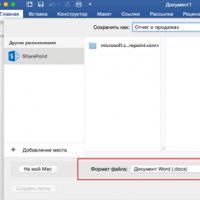 Save files in PDF or XPS format
Save files in PDF or XPS format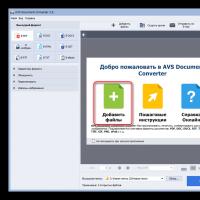 Download the program to convert pdf to rtf online
Download the program to convert pdf to rtf online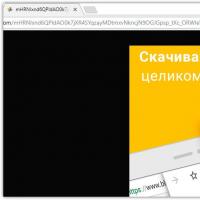 WebP to JPG webp to jpeg file online
WebP to JPG webp to jpeg file online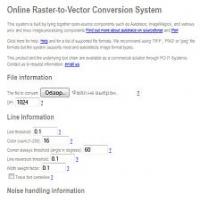 Conversion program to svg format
Conversion program to svg format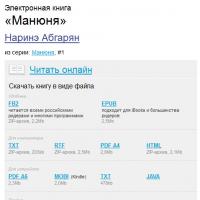 What is the difference between e-book formats and which format to prefer
What is the difference between e-book formats and which format to prefer File Conversion WEBP to JPG How to convert webp file to jpg
File Conversion WEBP to JPG How to convert webp file to jpg